Newport to Llandudno junction (5 days- 111 miles)
Day 1- Chirk to Llangollen (9 miles)
I caught the train at Newport heading for Chirk (changing at Shrewsbury) along a route that hugs Offa’s Dyke. The scenery from Pontypool on becomes mountainous passing the glorious ‘Blorenge’ at Abergavenny then on to Hereford where its wise if you’re Welsh not to get off the train on a Sunday as rumour has it; a Welshman can legally be shot (and killed) with a longbow except in church close. I haven’t put this to the test yet.
Just before Craven arms station on the right hand side is Stokesay Castle and medieval manor house, it looks fantastic and although I haven’t visited it yet, I think I will base a trip around the area. At Church Stretton ragged and colourful moss covered mountain ranges ascend from both sides of the town. Onto Shrewsbury, a medieval market town, strangely one had to leave the station to get to the other platform. It’s only when outside you can see the magnificence of the castle-like station building. I had time for a quick coffee before my next connection. Now heading towards Chirk it struck me Shrewsbury has two massive signal box’s, one of which (courtesy of Google and for those interested) is the world's largest operational mechanical signal box.
 We arrived at Chirk, a pretty little station with many flowers in bloom (someone still cares).
I unloaded my bike off the train (Click the image for a hidden gem of Chirk
station), and headed for a seat to change into my cycling kit. I took my trainers off
and then realised I was stood in someone’s vomit (I’m sure that this isn’t representative of Chirk).
After a quick foot wash and a change of socks (with others thrown in the bin), I plunged into my cycling shoes
and powered up the Garmin 605 (should have bought the 705). Chirk station hasn’t got a lift, to
alight from the station there are steps (not an easy feat with almost seventy pounds of kit and
bike). I had meticulously planned the trip on the Garmin website and labelled each day ‘North Wales day
one through to North Wales day five’, but for some unknown reason the individual routes had only
retained the ‘North Wales’ title (this had never happened before), so there was 6 North Wales
journeys.
We arrived at Chirk, a pretty little station with many flowers in bloom (someone still cares).
I unloaded my bike off the train (Click the image for a hidden gem of Chirk
station), and headed for a seat to change into my cycling kit. I took my trainers off
and then realised I was stood in someone’s vomit (I’m sure that this isn’t representative of Chirk).
After a quick foot wash and a change of socks (with others thrown in the bin), I plunged into my cycling shoes
and powered up the Garmin 605 (should have bought the 705). Chirk station hasn’t got a lift, to
alight from the station there are steps (not an easy feat with almost seventy pounds of kit and
bike). I had meticulously planned the trip on the Garmin website and labelled each day ‘North Wales day
one through to North Wales day five’, but for some unknown reason the individual routes had only
retained the ‘North Wales’ title (this had never happened before), so there was 6 North Wales
journeys.
It was a beautiful warm day, I sat in the shade of a bus stop and went through each route trying to find the ‘Chirk to Llangollen’ map. After ten minutes messing about I decided to use the old fashioned way and ask somebody. The only people in sight happened to be Irish and weren’t from the area but knew the direction of the Llangollen canal (proper name the Shropshire Union Canal). With the Garmin holding its head in shame I headed off in the directions given. Down a little slope and there it was; right was a tunnel and left a small viaduct. A couple sat on a bench pointed me in the right direction; my fate was in their hands.
 The path in the tunnel was about three feet wide and pitch black. The sign outside suggested
cyclists should dismount and walk along the path, but with my bike fully laden with enough gear a
Sherpa would have struggled to carry, there wasn’t enough room to walk beside it. With my ‘Cree’
headlamp putting out enough lumen to light a small park, I headed into the tunnel. The roof started
to curve at shoulder height forcing me to ride side saddle, at any moment I was expecting the hand
rail to give way and in to the drink I’d go. After a few heart raising moments I emerged from the quarter
mile long tunnel. I always thought the tow path was big enough to get a horse through, on this occasion
a Shetland pony would have struggled to get through.
The path in the tunnel was about three feet wide and pitch black. The sign outside suggested
cyclists should dismount and walk along the path, but with my bike fully laden with enough gear a
Sherpa would have struggled to carry, there wasn’t enough room to walk beside it. With my ‘Cree’
headlamp putting out enough lumen to light a small park, I headed into the tunnel. The roof started
to curve at shoulder height forcing me to ride side saddle, at any moment I was expecting the hand
rail to give way and in to the drink I’d go. After a few heart raising moments I emerged from the quarter
mile long tunnel. I always thought the tow path was big enough to get a horse through, on this occasion
a Shetland pony would have struggled to get through.
The path was ridable and I now plodded along at a nice pace. The funny thing I’ve noticed about people walking along the canal is locals (I presume) don’t like cyclists. When I draw near, they shout at or grab their dogs with haste as if I were an approaching runaway train. I haven’t got a bell (yet) but I don’t ride in stealth mode and try and frighten the punters, I wait until they’re aware of me before continuing, which still isn’t to some yokels liking. Through a similar tunnel; Whitehouses Tunnel (which I had now had experience with) and onto my first aqueduct; Froncysyllte aqueduct. Then onto the scary Pontcysyllte aqueduct; the longest and highest aqueduct in Britain. Again I had no choice but to ride across it, only getting off for people to squeeze past, some thought it rude, but it was out of necessity not valour I choose to cycle across it. I wonder how the huge horses felt going across in the old days. The views of the Dee valley below are superb and it has long been on my ‘bucket list’ to see it in person, I’ve seen many documentaries on it. I must admit it didn’t disappoint.
 150 yards north of the spine tingling viaduct was Trevor Basin, the basin was originally
built at the northern end of the central section of the Ellesmere Canal. With the abandonment
of the planned extension to Chester, Trevor Basin became the terminus of the Ellesmere Canal
itself. There is a cafe, pub, and visitor centre here, I plodded on.
150 yards north of the spine tingling viaduct was Trevor Basin, the basin was originally
built at the northern end of the central section of the Ellesmere Canal. With the abandonment
of the planned extension to Chester, Trevor Basin became the terminus of the Ellesmere Canal
itself. There is a cafe, pub, and visitor centre here, I plodded on.
After riding nearly nine miles I hit the Siambr Bridge (not literally) in Llangollen, here I veered off the canal and headed for my first campsite up a very steep hill; Wern farm. Wern farm was exactly what it said on the tin; a working farm. There wasn’t a flat pitch as it was on the side of a hill (an experience at night I wouldn’t want to do again as I kept sliding in a heap to the bottom of the tent). I now insist on flat pitches. There’s good views of Castell Dinas Brân, a medieval castle standing on the hill above the farm. Llangollen had two clocks chiming the time every quarter (strangely out of sync with each other by a few minutes) of an hour beckoning me to get changed and eat. The showers were basic and cost twenty pence for five minutes. I purposely left my ‘Gillie kettle’ at home as I didn’t get on with it, it always took too long to fire up; no good if you’ve ridden some distance and just want to eat or have a cup of tea. So I was ‘in-between cooking facilities’.
I grabbed a taxi card, now clean and hungry I headed down to the town on foot. I headed for the corn mill, converted from its namesake; it has wood beams on three levels and a water wheel turns slowly behind the bar. The outside decks are built directly over the mill race and rapids. The food was fast and excellent, there’s a wide variety of cask ales and variety of ciders. I had mouth watering scallops with chorizo as a starter and melt in the mouth belly pork with crackling, I’m well travelled and give this a eight out of ten. I had only ridden ten miles today but after three ciders that was enough for me, after a small mooch around the town I decided to walk back to the campsite (taxi’s are about five pound). There was a noisy DoE party in the next field but the noise stopped dead at eleven (very disciplined), but I couldn’t say it was peaceful. The campsite is surrounded by sheep baa-ring in competition and then horses began neighing as loud as I’d ever heard. I know the owners have no control over the noisy antisocial animals but a pair of ear plugs can help.
Day 2- Llangollen to Dolgellau via Llangollen and Bala railway
(30 miles + 5)
Morning slapped me in the face with the church bells ringing, I was almost awake anyway. I had planned
to leave each campsite around ten. Each trip I’ve done, I've learnt how to make the next better, part
of this is putting some items in waterproof space bags, this is not without strife but has to be done (I don’t
want to sleep in a wet sleeping bag ever again). This packing takes time, at least half an hour. I left my
 trainers on and rolled down to Llangollen and had breakfast in the station cafe. I’d planned to incorporate
the Llangollen train into my itinerary to get to Dolgellau (along with the Bala train). The first train was
at ten fifty terminating in Carrog at eleven thirty. There’s plenty of space in the guards van for bikes but
they do charge. Travelling in the guards van with me was a young lad with his dad on a tandem, I thought what
a magical memory that must have created.
trainers on and rolled down to Llangollen and had breakfast in the station cafe. I’d planned to incorporate
the Llangollen train into my itinerary to get to Dolgellau (along with the Bala train). The first train was
at ten fifty terminating in Carrog at eleven thirty. There’s plenty of space in the guards van for bikes but
they do charge. Travelling in the guards van with me was a young lad with his dad on a tandem, I thought what
a magical memory that must have created.
The journey is not to be missed; it takes in beautiful views running alongside the river Dee. Travelling through a valley reminiscent of the ‘Wye valley’ the smell of the coal and the sound of the chuffing is fantastic. The line is full gauge with restored carriages, one can stick your head out of (but not recommended by the health and safety chaps) the windows and have real smoke in your eyes. We passed many canoe groups both on and off the river, everyone near the railway waved at the train and people waved back (remnants of a bygone age). The train stops at a few stations, but none as grandiose as Llangollen, the train terminates at Carrog. I loved every minute of it.
I put my cycling shoes on and I was off, over Carrog bridge then up, then down, then up again.
The terrain couldn’t decide to go up or down so did both every hundred yards preventing a rhythm either
way. I was pushed for time to get to Bala lake railway for my next connection 15 miles away. The route
eventually went back onto a busy 'A' road and uphill for many miles, opening out to see a glimpse of the
 lake. I must admit I was disappointed with Bala station, well it wasn’t really a station; a few benches and
a bus shelter. The train whistled out of sight and came into view wobbling and chugging up to the mini
platform. Unbelievably, sitting in the rear carriage was a work colleague. I loaded my bike into the
space near the guard, one bike with panniers and a wheelchair and it was full. The line followed the
side of the lake but was obscured sometimes by many trees finally terminating at Llanuwchllyn station,
a real full size station and signal box. I asked about the line thinking it was possibly a remnant of
an industrial narrow gauge railway, but I was informed it actually formed part of the full gauge railway
up to Llangollen and was all the way to Dolgellau.
lake. I must admit I was disappointed with Bala station, well it wasn’t really a station; a few benches and
a bus shelter. The train whistled out of sight and came into view wobbling and chugging up to the mini
platform. Unbelievably, sitting in the rear carriage was a work colleague. I loaded my bike into the
space near the guard, one bike with panniers and a wheelchair and it was full. The line followed the
side of the lake but was obscured sometimes by many trees finally terminating at Llanuwchllyn station,
a real full size station and signal box. I asked about the line thinking it was possibly a remnant of
an industrial narrow gauge railway, but I was informed it actually formed part of the full gauge railway
up to Llangollen and was all the way to Dolgellau.
Just as I was on my second cup of tea with my work colleague the heavens opened up and I still had another fifteen miles to the next campsite at Dolgellau. The weather closed in and I had to put my daylight back lamp on (a back light too powerful for night time use), wet and warm I trudged on. The route took me through a wooded valley, streams of water crossed the road making it treacherous. Five miles from Dolgellau the sun came out but my route was blocked from a closed road due to an accident, after a six mile detour I reached the campsite; Tan-y-fron.
A bijou campsite well looked after with a full mixture of Bed and breakfast, static and touring caravans, tents and camping pods. The pitches were tiered on flat ground to leave an unobscured view of the Cader Idris mountain range. After a shower (in decent showers) I opened my ‘Helinox Camping Chair’, a very expensive, lightweight (with room for a wide bum) but faultless chair. I’ve tried others and there are none that match. I sat in the sun and watched the clouds drift across the mountains in the distance and gathered my thoughts. The town was a five minute walk from the campsite and I intended to eat at the Yr Hen Fecws restaurant, but I was a victim of its popularity, it was fully booked (on a Wednesday). I was recommended a tapas bar in the town which was at best unremarkable. Back at the campsite I missed my evening cup of tea before turning in.
Day 3- Dolgellau to Porthmadog via Barmouth (32 miles + 8)
Through a sleepy Dolgellau and onto a cycle path by the river then onto the Mawddach trail with the
sun shining, it was busy even at nine thirty in the morning. The first sight of the estuary is about three
miles from Dolgellau, there a signal box still remains from the Ruabon (still on the main line) to Barmouth
line. At the same point sits the 17th century George the III hotel.
 In its time it was a chandlers' serving the boat building industry nearby. The Lodge is younger, Victorian
in age, built as a waiting room, ticket office and station master's house for the adjacent station (now sadly
part of history). Just in front of the hotel is Penmaenpool bridge where a sad tragedy happened in the 1960’s.
In its time it was a chandlers' serving the boat building industry nearby. The Lodge is younger, Victorian
in age, built as a waiting room, ticket office and station master's house for the adjacent station (now sadly
part of history). Just in front of the hotel is Penmaenpool bridge where a sad tragedy happened in the 1960’s.
The stone path is quite straight passing marshes on the left and the estuary on the right. At this time the tide was out exposing the mud flats and sand bars with hundreds of wading birds. The path leaves natural land and crosses a manmade dyke which still has the old telegraph posts intact. Through some trees and the Barmouth bridge appears, there were lots of people on it, I feel if ridden later in the day it would be too full. The wooden planks are ninety degrees to the path (unlike some wooden bridges where cyclists have to be careful not to go in-between the planks), but they’re very uneven and can only be rode at a slow pace. In the middle the tide was coming in, I was surprised how fast it was. At the other end is a little toll booth but this was closed allowing free passage. I was almost caught out by the steepness of the entry ramp onto the bridge and just made it to the top without stalling. At the top of the ramp it goes straight out onto the main road- take care! I had a cup of coffee in a beach front cafe and continued on, at the other end of the beach road was another ridiculously steep path back onto the main road.
The road gradually rises and veers away from the sea, many static holiday parks cover the coast to
the left and I feel there must have been a flatter road than the one I’m on. Three miles from Harlech
the road peeks, giving way to extraordinary views of a turquoise sea that could easily be in the south
of France. Down a tree lined, stone walled descent and into Llanbedr, a pretty little village.
 Two more miles on Harlech appears dominated by its castle, towering over everything. On the steep narrow street
leading to the castle is Hufenfa'r Castell a renowned ice cream shop, with the produce made on site. I
had a cone of chocolate mandarin ice cream, whether it was the heat or the fact I was gasping, I don’t
know, but I can safely say this was the best ice cream I’d ever had, washed down with a mug of
tea.
Two more miles on Harlech appears dominated by its castle, towering over everything. On the steep narrow street
leading to the castle is Hufenfa'r Castell a renowned ice cream shop, with the produce made on site. I
had a cone of chocolate mandarin ice cream, whether it was the heat or the fact I was gasping, I don’t
know, but I can safely say this was the best ice cream I’d ever had, washed down with a mug of
tea.
From here it would have been only less than ten miles to my next campsite but the bridge crossing the Afon Glaslyn was closed adding another eight miles to the journey. The day was so hot I used two bottles in the space of a few miles. Not only was the bridge shut but the way ahead was single track with temporary traffic lights. A chance to fill my bottles from the man controlling the lights, he explained to me that an escort vehicle will follow the last vehicle through, I let the traffic pass and continued. Though unwanted extra mileage, it was a pleasant ride with no cars on the road at all (as the escort was behind me).
 I crossed the river and headed for my next point of interest; Portmeirion, but before I got there I
noticed a building I’d seen in a documentary on TV; the Festiniog (or Ffestiniog) Union workhouse. One
of the earliest workhouses in Wales, it opened in 1837 to look after the poor. It quickly changed its
policies to almost incarcerate anybody who couldn’t support themselves including; vagrants, orphans,
mentally ill, elderly, unwed mothers. None of which had separate accommodation (to begin with),
Festiniog Union workhouse ended its life as an elderly peoples home around 2010, it’s now almost
derelict but grade 2 listed. As I sipped my bottle an old chap walked past and I began a conversation
with him, he enlightened me to the fact that he was once an inmate when it housed mental patients.
I crossed the river and headed for my next point of interest; Portmeirion, but before I got there I
noticed a building I’d seen in a documentary on TV; the Festiniog (or Ffestiniog) Union workhouse. One
of the earliest workhouses in Wales, it opened in 1837 to look after the poor. It quickly changed its
policies to almost incarcerate anybody who couldn’t support themselves including; vagrants, orphans,
mentally ill, elderly, unwed mothers. None of which had separate accommodation (to begin with),
Festiniog Union workhouse ended its life as an elderly peoples home around 2010, it’s now almost
derelict but grade 2 listed. As I sipped my bottle an old chap walked past and I began a conversation
with him, he enlightened me to the fact that he was once an inmate when it housed mental patients.
Passing one of the Ffestiniog narrow gauge stations on the right; Minffordd. I continued on to Portmeirion, another one on my bucket list. I rode up to the main entrance and explained to one of the staff I needed a secure place to store the cycle. “Oh yes”, the man said “there’s cycle racks in the main car park over there”, pointing to a public car park. I have difficulty most places I go convincing people I can’t just lock the bike up anywhere (I can of course but I won’t) when the only protection for my belongings is a few zips. Its slightly different on a campsite, the threat still exists but it is less, as the general public don’t have access to the site. Eventually a lady member of staff suggested I lock the bike up behind the ticket booth, this I was happy with. More and more people are touring by bike, most companies have lock ups for motorcycles and bikes, when are tourist attractions going to provide these?
I changed my shoes and went in. This place was made famous by the TV series ‘the prisoner’ and is very apt. The series was weird and so is Portmeirion, it’s an eclectic mixture of colour and building style. It’s not that it’s old, being primarily constructed in 1925 from an existing small fishing village. It’s more in tune with a theme park or one of the villages in Disney land pointing out ‘this is what Meirion villages look like, in the country of Meirondonia’ and then the crowd moves onto the next style of village. It’s quite compact almost falsely packed together, a real village would have a bit more breathing space between buildings, it reminds me of Clovelly, but Clovelly was built out of need not whim. Each building is either some kind of tourist shop or accommodation, the village is overwhelmingly fake, I’m sure viewed from a helicopter it would look like a model village, but in contradiction it’s a must to visit if in the area and at night when the public have gone I believe it would be a very special place.
I continued on to Porthmadog across the ‘cob’, a causeway originally built to reclaim land from the sea, the last two trains of the Ffestiniog & Welsh Highland Railway sat smoking in the station ready to leave. After a cup tea, I watched them leave and rode to the Tyddyn Llwyn Campsite, only about two mile away but up a big hill again though as a consolation the views of Snowdon are immense. It’s a huge site and has a well stocked shop/ reception and best of all a pub on site. I was told to pitch anywhere that’s green, I pitched at the top of the hill with tremendous view of Moel y Gest. The grass was short and soft like someone’s well kept lawn, I felt comfortable bearfoot. The showers were 50p and were clean and modern. After a shower I set out to try the ales in the pub (what I mean is cider), the menu was unsurprising. I ordered Pâté as a starter and steak and ale pie, it was fine wholesome food but if you’re looking for À la carte this isn’t the place.
After several ciders I was ready to sit in the diminishing sun and read my book on my ipad (you can see now why I didn’t just want to lock the bike up anywhere). There was a huge craggy hill behind the site restricting the wind which was good as about 3.30 am the wind picked up, I could hear it howling across the trees, but eerily the tent was still. Then thunder came, not frightening bangs after strikes but long rumbling groaning thunder that lasted (it seemed) for minutes. I opened the outer flap of my tent and saw lightening striking the mountain range in the distance. I lay there for quite some time marvelling at this free show, I’ve never seen anything quite like it, it was fantastic. Then it began to rain, I shut the flap and fell into a deep restful sleep. When the sun heated the tent in the morning it was ten to eight, I opened the flap and felt the grass, it was just mildly damp.
Day 4- Porthmadog to Pendyffryn via Porthmadog to Caernarvon via the WHHR (25 miles (which ended up as 32 miles)
I rolled down the hill to the Welsh Highland Heritage Railway station, bought my ticket and sat down for breakfast; a full breakfast. Though everyone knows how to cook an ‘English breakfast’ (or Welsh) it’s extraordinary that they don’t have a universal taste. This one was spot on- mushrooms, fried bread, hash brown, blackpudding, beans, egg, sausage (these were superb), bacon and toast and of course tea. I suppose they were all locally sourced.
I had enough time to walk down the train and looked in the first class Pullman carriage, this was a one off journey so I decided to upgrade, it was twenty three pounds (third class) plus the eight pound supplement. The Garratt came from over the cob and attached itself to our train, then we were off. We crossed the road and went inland, soon we were following a river and chugging up through a valley- the Aberglaslyn pass, it was magical. We stopped at Beddgelert station to take on water and wait for the southbound train to pass. Through woods, farms and then in a horseshoe track doubling back on ourselves to get the height. The journey takes just under two and a half hours before pulling into Caernarfon.
 I disembarked the train and watched it change direction before heading off to Caernarfon castle.
I feel castles
are most impressive when viewed from the outside but this one had a museum I wanted to see; The Royal Welch Fusiliers
museum. They locked the bike away in a little room next to the ticket booth. You can walk the ramparts and ascend the
towers if you’re brave. When I mean brave; the spiral stone steps leading to the turrets were steep and tight, with
only a rope as a handrail, I’m not scared of heights but I am frightened of tumbling to my death down the dodgy
stairs. In fairness the views were fantastic. The museum didn’t disappoint either but time was ticking and I still
had a twenty five mile ride ahead of me.
I disembarked the train and watched it change direction before heading off to Caernarfon castle.
I feel castles
are most impressive when viewed from the outside but this one had a museum I wanted to see; The Royal Welch Fusiliers
museum. They locked the bike away in a little room next to the ticket booth. You can walk the ramparts and ascend the
towers if you’re brave. When I mean brave; the spiral stone steps leading to the turrets were steep and tight, with
only a rope as a handrail, I’m not scared of heights but I am frightened of tumbling to my death down the dodgy
stairs. In fairness the views were fantastic. The museum didn’t disappoint either but time was ticking and I still
had a twenty five mile ride ahead of me.
Within five minutes I was on an old railway path leading away from Caernarfon with some impressive views of the Menai straits. The railway path stopped at Port Dinorwic, a pretty little inlet that was an important port. The route now took me back onto a main road cycle path and then through winding country roads through a ford and back out to the main road again, this was hard work and I would probably choose another route if I did it again. I passed Penrhyn castle lodge, given more time I would have gave it a visit but I continued on, the weather was baking. Down a very straight (old roman road I believe) then onto a coastal cycle path, the sea breeze helped cool me down. Very pretty route I must say. As with all of the route, I research it prior to the ride. I rode the through the village of Penmaenmawr, a sight of a horrific train crash in the 1950’s.
I arrived at Lyons Pendyffryn hall campsite very hot, hungry and dripping with sweat. I went to book in and was told (it was 1700) the office was now closed and could I pay in the morning. Fine not a problem, I asked where the cafe was and was told they’re not doing food, all they have is snacks in the bar (crisps, nuts etc). I explained I do need food so the lady gave me a handful of takeaway leaflets. I rolled down a bumpy gravel road passed some caravans and began to prepare to set the tent up. I read the leaflets, all were in surrounding villages and none delivered this far. It was either get a taxi three miles there and three miles back or ride to a takeaway. The road noise settled it for me, I was going to ride on to Conwy and stay in a hotel. Back home I looked at google maps and saw there were a few campsites very near, they didn’t have a pub on site but they were walking distances from villages and of course food. Next trip I will have back up campsites.
I had ridden twenty five miles and was hot and hungry, now I had another severn miles to go. The path to Conwy was picturesque with views of the Great Orme Llandudno. At Conwy I stayed at the Castle hotel, they were very accommodating, after a shower and some grub I strolled around the town; a walled town with plenty of pubs on the waterfront. It had been a long day and with a few ciders on board my day was done.
Day 5- Conwy to Newport (on train)
 The next day I had a hearty breakfast and had a walk around the castle before making my way across
the bridge to Llandudno junction station. On the way back I met a seventy year old chap on his way to France
to cycle around Normandy. He explained the paths are very good and Europe is very receptive to cyclists, he
was an interesting chap and made the journey back fly past. I rode home from Newport station, I couldn’t wait
to see my dog and get the trip down on the computer.
The next day I had a hearty breakfast and had a walk around the castle before making my way across
the bridge to Llandudno junction station. On the way back I met a seventy year old chap on his way to France
to cycle around Normandy. He explained the paths are very good and Europe is very receptive to cyclists, he
was an interesting chap and made the journey back fly past. I rode home from Newport station, I couldn’t wait
to see my dog and get the trip down on the computer.
For me, North Wales was a monumental short cycling holiday; old railway routes, three steam railways, canals, aqueducts, three huge castles (and some smaller ones), great food and good beer, but it was the cycle camping that made it different for me. There is something transporting everything you 'need' on a bike that sheds away the myths of what we think we 'must' have to survive.
-
Gallery
 Why not have a look at the gallery relating to this ride. Click the image or the title. Why not click the small
images
Why not have a look at the gallery relating to this ride. Click the image or the title. Why not click the small
images -
Offa's Dyke
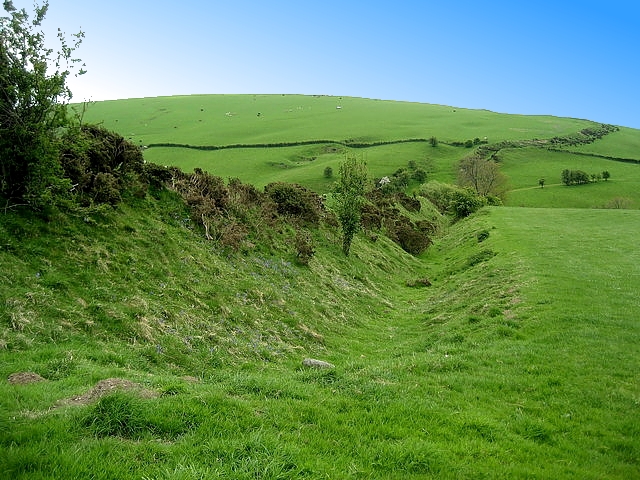 Offa's Dyke (Welsh: Clawdd Offa) is a 1200 year old large linear earthwork that roughly follows the current
border between England and Wales, running 283km from Prestatyn (North Wales) to Chepstow (South Wales).
Offa's Dyke (Welsh: Clawdd Offa) is a 1200 year old large linear earthwork that roughly follows the current
border between England and Wales, running 283km from Prestatyn (North Wales) to Chepstow (South Wales). -
The Blorenge
The Blorenge (Welsh: Blorens) is a prominent mountain which overlooks Abergavenny. Much of the mountain has been designated as a Site of special scientific interest principally for its heather moorland which is important for breeding Red Grouse.
-
Hereford
Hereford is a cathedral city which spans the River Wye. Most important the Hereford Cider Museum is located in the City, with a shop and a fully interactive guide to how to produce the drink
-
Stokesay Castle
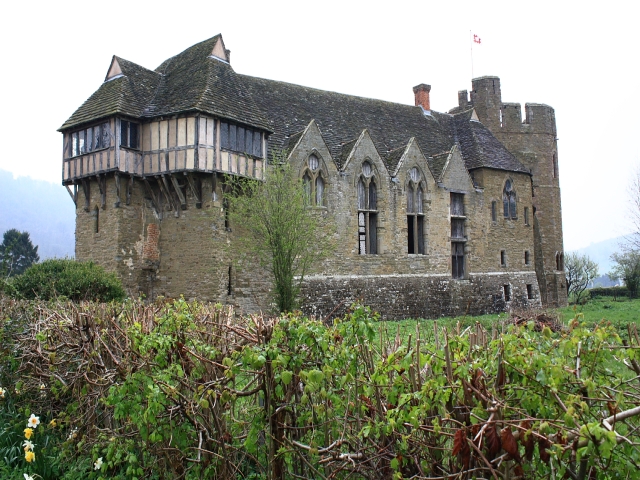 Stokesay Castle is a fortified manor house in Stokesay, Shropshire, England. It was built in the
late 13th century by Laurence of Ludlow.
Stokesay Castle is a fortified manor house in Stokesay, Shropshire, England. It was built in the
late 13th century by Laurence of Ludlow. -
Church Stretton
Church Stretton is a small town and civil parish in Shropshire nicknamed Little Switzerland.
-
Shrewsbury
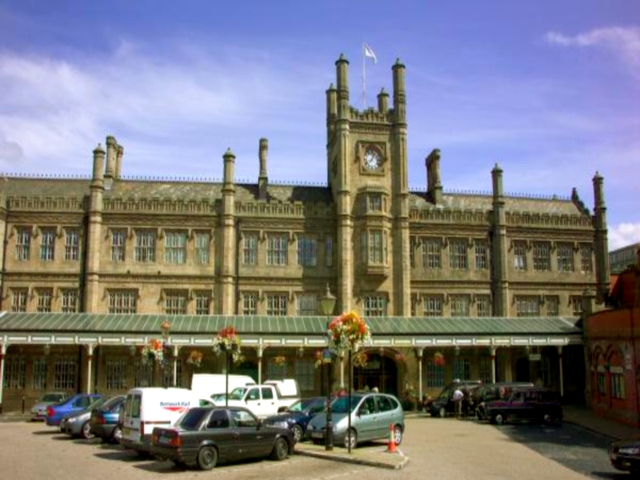 Shrewsbury is a historic market town whose town centre has a largely unaltered medieval street plan
and over 660 listed buildings including several examples of timber framing from the 15th and 16th centuries.
Shrewsbury is a historic market town whose town centre has a largely unaltered medieval street plan
and over 660 listed buildings including several examples of timber framing from the 15th and 16th centuries. -
Chirk tunnel
Lies on the Llangollen Canal, immediately northwards of the Chirk Aqueduct. It is 421 metres (460 yd) long and has a complete towpath inside.
-
Pontcysyllte aqueduct
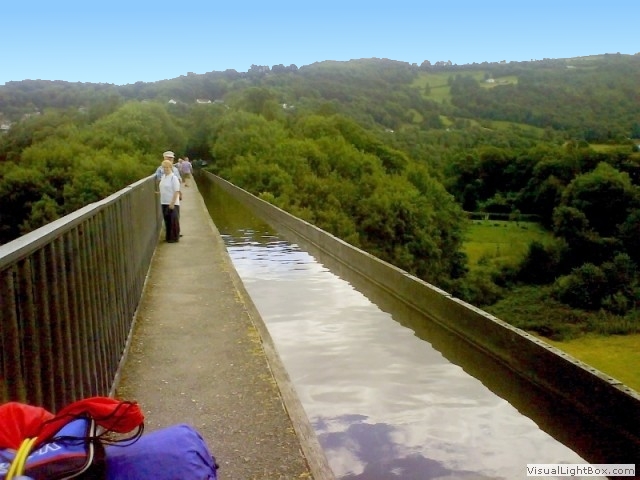 The aqueduct was built by Thomas Telford and William Jessop in 1805, it is 307m long. It consists of
a cast iron trough supported 38m above the river on iron arched ribs carried on nineteen hollow
masonry piers (pillars). The trough was made from flanged plates of cast iron, bolted together, with the
joints 'corked' with Welsh flannel and a mixture of white lead and iron particles.
The aqueduct was built by Thomas Telford and William Jessop in 1805, it is 307m long. It consists of
a cast iron trough supported 38m above the river on iron arched ribs carried on nineteen hollow
masonry piers (pillars). The trough was made from flanged plates of cast iron, bolted together, with the
joints 'corked' with Welsh flannel and a mixture of white lead and iron particles. -
Castell Dinas Brân
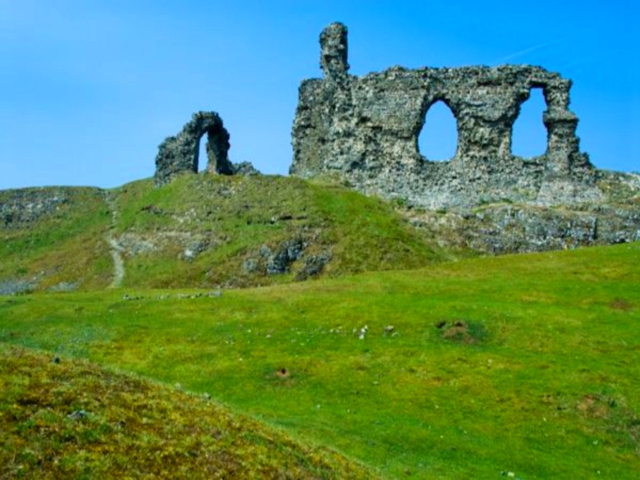 The castle first appeared in 12th century historical documents. The remains we see today date back to the
occupation of the Princes of Powys Fadog in the mid 13th century. Castell Dinas Bran occupies a spectacular site with
views down to Llangollen.
The castle first appeared in 12th century historical documents. The remains we see today date back to the
occupation of the Princes of Powys Fadog in the mid 13th century. Castell Dinas Bran occupies a spectacular site with
views down to Llangollen. -
Llangollen
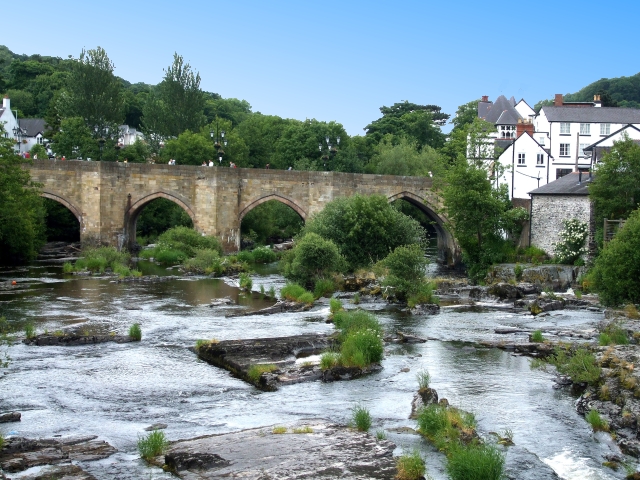 A small town which takes its name from its founding Saint; St Collen, a seventh century saint. It is well
known for hosting the Llangollen International Musical Eisteddfod every July which brings in some 120,000
visitors to the town.
A small town which takes its name from its founding Saint; St Collen, a seventh century saint. It is well
known for hosting the Llangollen International Musical Eisteddfod every July which brings in some 120,000
visitors to the town. -
The Corn Mill
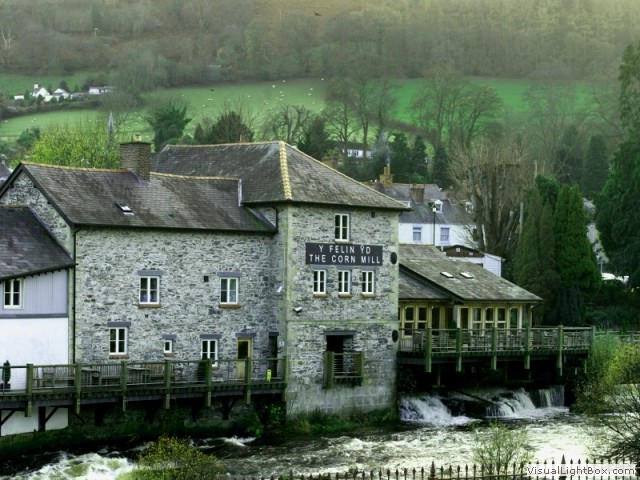 The Corn Mill ground flour for at least seven hundred years right up to 1974, it owes its foundation
to the Cistercian monks of Valle Crucis. Converted in 2000 to a pub/ restaurant- highly
recommended.
The Corn Mill ground flour for at least seven hundred years right up to 1974, it owes its foundation
to the Cistercian monks of Valle Crucis. Converted in 2000 to a pub/ restaurant- highly
recommended. -
Llangollen railway
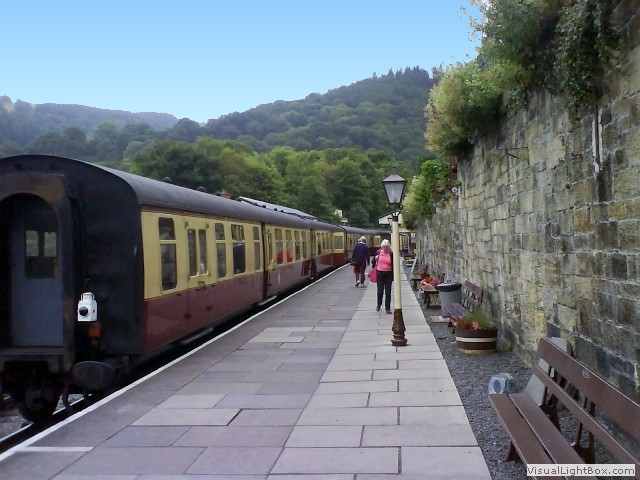 Commercial development of the local mining industry meant that the need for a railway became essential
to the region’s economic development. The line opened to freight on 1 December 1861, and to passengers on 2
June 1862 and closed after its centenary by the Beeching cuts. It runs through the Dee valley designated as
an area of outstanding beauty.
Commercial development of the local mining industry meant that the need for a railway became essential
to the region’s economic development. The line opened to freight on 1 December 1861, and to passengers on 2
June 1862 and closed after its centenary by the Beeching cuts. It runs through the Dee valley designated as
an area of outstanding beauty. -
Corwen
The Ruabon to Dolgellau GWR Railway Line and the Ruabon to Denbigh and Rhyl LNR Railway Lines met at Corwen. It was the hub for road and rail access to the North and West coasts of North Wales. Recently the Llangollen railway has relayed the track to back to Corwen, with a new station to be built. For more information on the station click here.
-
Bala lake
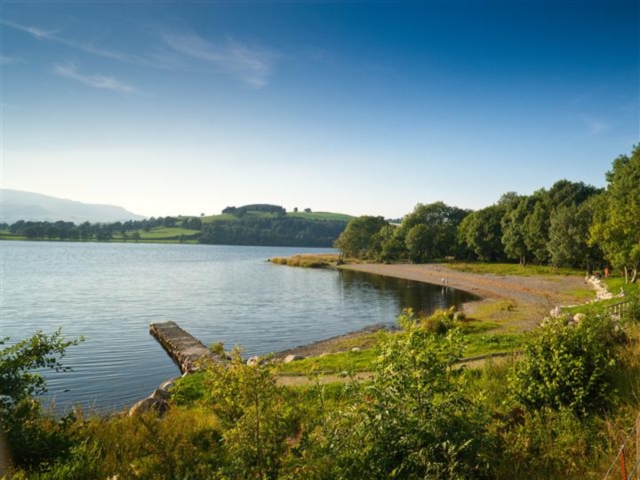 Bala Lake is crossed by the River Dee, it is the largest body of water in Wales, being four miles long and
a mile wide. The lake is known in Welsh as 'Llyn Tegid', meaning Lake of Serenity, and was formed by the
action of glaciers. Local legend states that the lake is inhabited by a monster which is known as 'Teggie'
and it is claimed that on moonlit nights towers and buildings can be seen under the waters of Bala Lake.
Bala Lake is crossed by the River Dee, it is the largest body of water in Wales, being four miles long and
a mile wide. The lake is known in Welsh as 'Llyn Tegid', meaning Lake of Serenity, and was formed by the
action of glaciers. Local legend states that the lake is inhabited by a monster which is known as 'Teggie'
and it is claimed that on moonlit nights towers and buildings can be seen under the waters of Bala Lake. -
The Beeching Axe
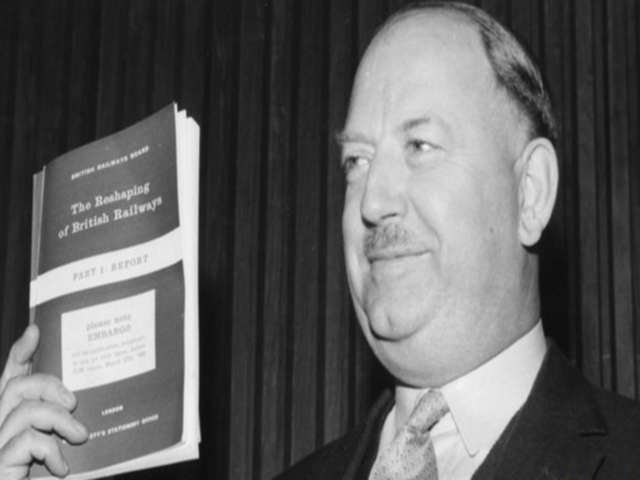 In the late 1800’s the private rail companies were out of control laying new routes. The Beeching
cuts (also known as the Beeching Axe) refer to the reduction of routes and restructuring of the Railways
in Great Britain during the 1960's. More than 2000 stations shut and 5000 miles of railway
line were earmarked for closure. Whole communities had formed around these rail
links, and it's estimated 67,000 people lost their jobs, devastating the areas. I honestly think the slashing of these
branch lines was nothing short of criminal, now they would have been preserved. They
could have been run by heritage railway societies or communities, but at the time of the cuts
this wasn’t allowed. The government was adamant these lines would close once and for all.
In the late 1800’s the private rail companies were out of control laying new routes. The Beeching
cuts (also known as the Beeching Axe) refer to the reduction of routes and restructuring of the Railways
in Great Britain during the 1960's. More than 2000 stations shut and 5000 miles of railway
line were earmarked for closure. Whole communities had formed around these rail
links, and it's estimated 67,000 people lost their jobs, devastating the areas. I honestly think the slashing of these
branch lines was nothing short of criminal, now they would have been preserved. They
could have been run by heritage railway societies or communities, but at the time of the cuts
this wasn’t allowed. The government was adamant these lines would close once and for all. -
Penmaenpool bridge
 The Grade II listed wooden toll bridge spans the Mawddach river and was built in 1879 by the Pernmaenpool
Bridge Company to replace a ferry across the river. In 1966 the bridge was the scene of one of the
country's worst ever pleasure boat disasters, a day trip from Barmouth ended in tragedy when it clipped
a stanchion on the bridge and overturned, fifteen people drowned including four children.
The Grade II listed wooden toll bridge spans the Mawddach river and was built in 1879 by the Pernmaenpool
Bridge Company to replace a ferry across the river. In 1966 the bridge was the scene of one of the
country's worst ever pleasure boat disasters, a day trip from Barmouth ended in tragedy when it clipped
a stanchion on the bridge and overturned, fifteen people drowned including four children. -
Barmouth bridge
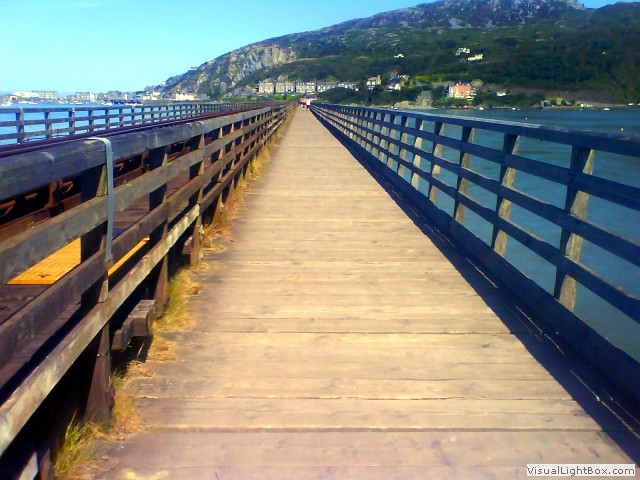 The bridge was built by the Aberystwyth and Welsh Coast Railway and opened in 1867. As built, it included
a lifting drawbridge section to permit the passage of tall ships, was constructed entirely of wood.
The drawbridge section, at the northern end of the bridge, was rebuilt in 1901 as a swing bridge with
two steel spans. The local council has to pay Network Rail, the owners of the largely wooden bridge £39,405
each year for a licence to allow walkers, cyclists and motorcyclists to use it.
The bridge was built by the Aberystwyth and Welsh Coast Railway and opened in 1867. As built, it included
a lifting drawbridge section to permit the passage of tall ships, was constructed entirely of wood.
The drawbridge section, at the northern end of the bridge, was rebuilt in 1901 as a swing bridge with
two steel spans. The local council has to pay Network Rail, the owners of the largely wooden bridge £39,405
each year for a licence to allow walkers, cyclists and motorcyclists to use it. -
Hufenfa'r Castell ice cream
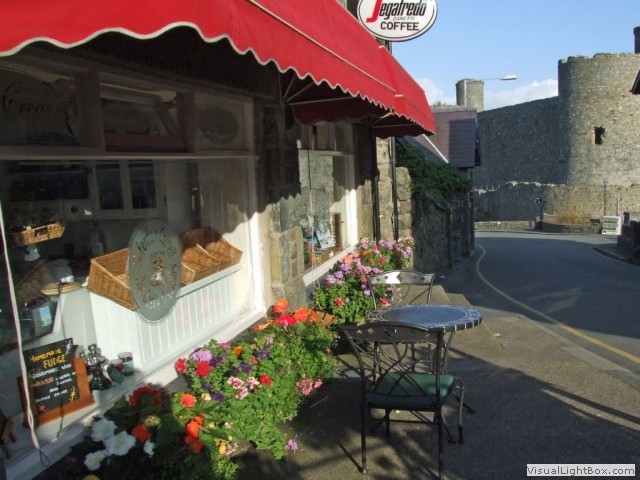 This is the best ice cream I’ve tasted, their reviews vary on how they speak to customers but no one
will argue Hufenfa'r Castell produces top quality ice cream.
This is the best ice cream I’ve tasted, their reviews vary on how they speak to customers but no one
will argue Hufenfa'r Castell produces top quality ice cream. -
Harlech castle
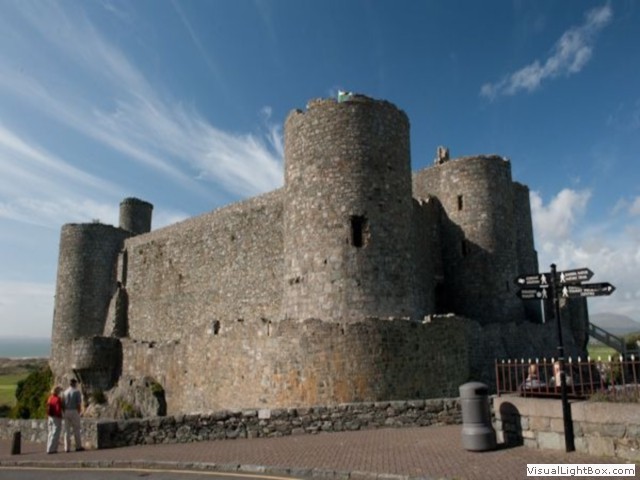 The English monarch Edward I built Harlech in the late 13th century to install command over the Welsh,
but ironically; in 1404, it was taken by Welsh leader Owain Glyn Dwr who proceeded to hold a parliament
here. There was a long siege here during the Wars of the Roses inspired the stirring song 'Men of Harlech'.
The English monarch Edward I built Harlech in the late 13th century to install command over the Welsh,
but ironically; in 1404, it was taken by Welsh leader Owain Glyn Dwr who proceeded to hold a parliament
here. There was a long siege here during the Wars of the Roses inspired the stirring song 'Men of Harlech'.
-
Bike storage
 It amazes me that tourist attractions don’t have facilities to store bikes (not just steel
loops to lock them to). It’s likely people who ride to places of interest are on prized possessions
or are tourer’s with panniers like me. Maybe I’ll start a campaign.
It amazes me that tourist attractions don’t have facilities to store bikes (not just steel
loops to lock them to). It’s likely people who ride to places of interest are on prized possessions
or are tourer’s with panniers like me. Maybe I’ll start a campaign. -
Portmeirion
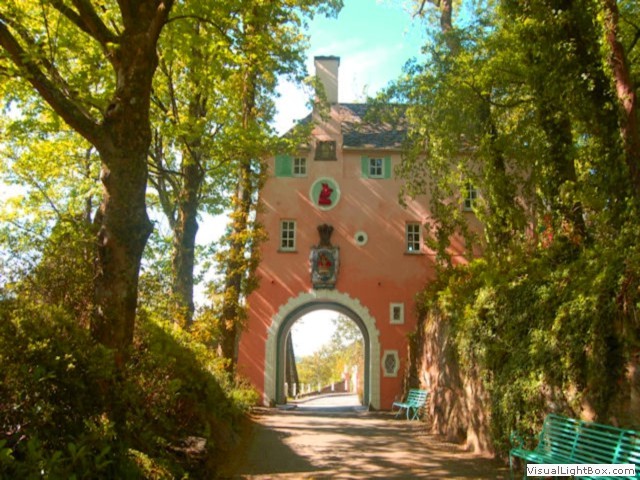 Though I’ve wanted to see this place for a long time in ‘the flesh’ so to speak. I never need to go
there again, it is a unique place, but there isn’t enough there to warrant another visit. The village
was made famous by the TV series ‘the prisoner'.
Though I’ve wanted to see this place for a long time in ‘the flesh’ so to speak. I never need to go
there again, it is a unique place, but there isn’t enough there to warrant another visit. The village
was made famous by the TV series ‘the prisoner'.
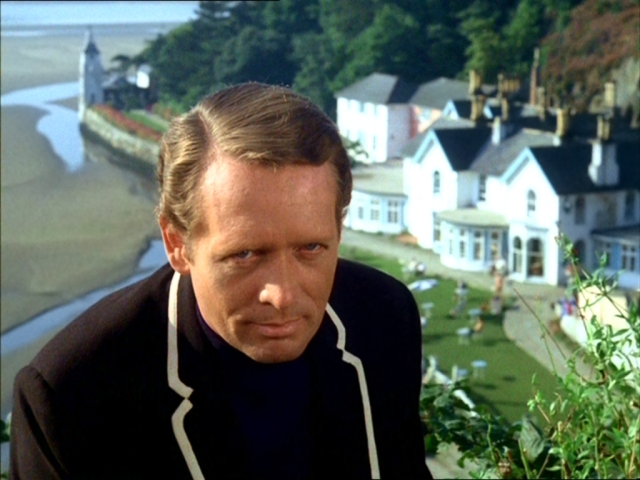 The Prisoner (known only as Number Six) is a former government agent who abruptly resigns from his
job and has been imprisoned in a beautiful, and charming, yet bizarre and enigmatic community, a
mysterious seaside "village" that is isolated from the mainland by mountains and the sea.
The Prisoner (known only as Number Six) is a former government agent who abruptly resigns from his
job and has been imprisoned in a beautiful, and charming, yet bizarre and enigmatic community, a
mysterious seaside "village" that is isolated from the mainland by mountains and the sea.
 Presumably wanted for the top-secret information he knows, Number Six is hunted, yet thwarts his
captors at every turn. Even the ‘Simpsons’ made an episode featuring the Prisoner.
Presumably wanted for the top-secret information he knows, Number Six is hunted, yet thwarts his
captors at every turn. Even the ‘Simpsons’ made an episode featuring the Prisoner. -
A success story
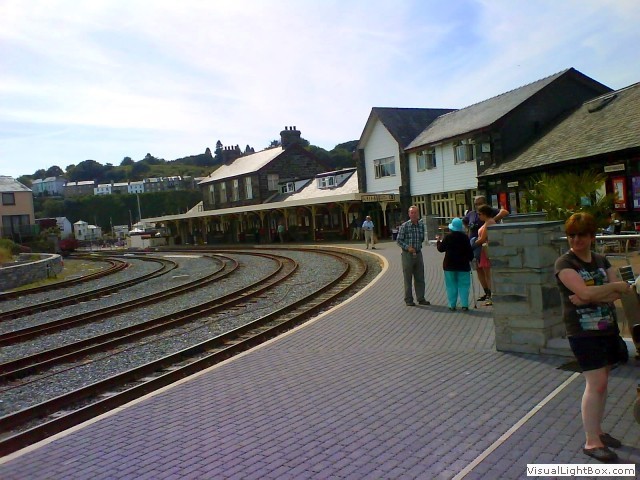 A remarkable success story the Ffestiniog & Welsh Highland Railway that has developed into one
of the top visitor attractions to North Wales and 2014 also marks the 40th anniversary of
Ffestiniog Travel, the railway’s travel agency
arm, which sends railway wayfarers out across the world in their quest for the Great
Railway Journey.
A remarkable success story the Ffestiniog & Welsh Highland Railway that has developed into one
of the top visitor attractions to North Wales and 2014 also marks the 40th anniversary of
Ffestiniog Travel, the railway’s travel agency
arm, which sends railway wayfarers out across the world in their quest for the Great
Railway Journey. -
The Moel-y-Gest quarry
 The Moel-y-Gest quarry just behind the Tyddyn Llwyn Campsite, is very popular with climbers, but
the quarry is also an important nesting site for both chough, peregrine and raven. Discussions
between the RSPB and the BMC agreed a number of restricted access routes to prevent the birds being
disturbed during nesting times.
The Moel-y-Gest quarry just behind the Tyddyn Llwyn Campsite, is very popular with climbers, but
the quarry is also an important nesting site for both chough, peregrine and raven. Discussions
between the RSPB and the BMC agreed a number of restricted access routes to prevent the birds being
disturbed during nesting times. -
Pullman coaches
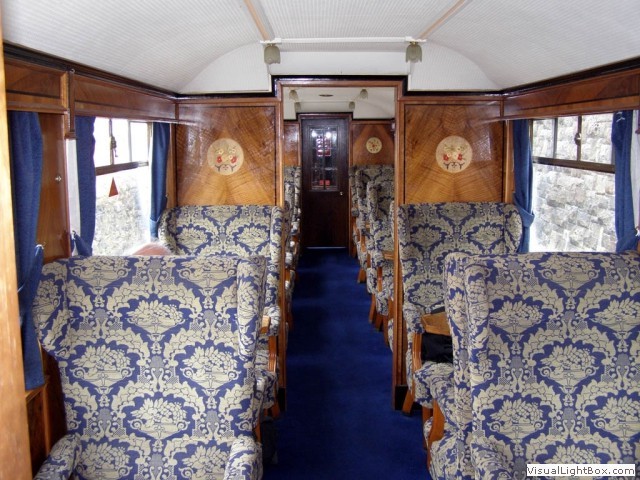 Pullman trains came into service in Great Britain in the late 1800’s, they were synonymous with
luxury, they operated first-class coaches and a steward service, but the idea came from ‘George
Pullman's Chicago Company’ in America.
Pullman trains came into service in Great Britain in the late 1800’s, they were synonymous with
luxury, they operated first-class coaches and a steward service, but the idea came from ‘George
Pullman's Chicago Company’ in America. -
The Aberglaslyn Pass
The Aberglaslyn Pass takes in a wealth of industrial archaeology relating to old copper mines of Cwm Bychan and Llyndu. There’s also stunning views of the mountains of Snowdonia, a wealth of plants and wildlife.
-
The Pals army
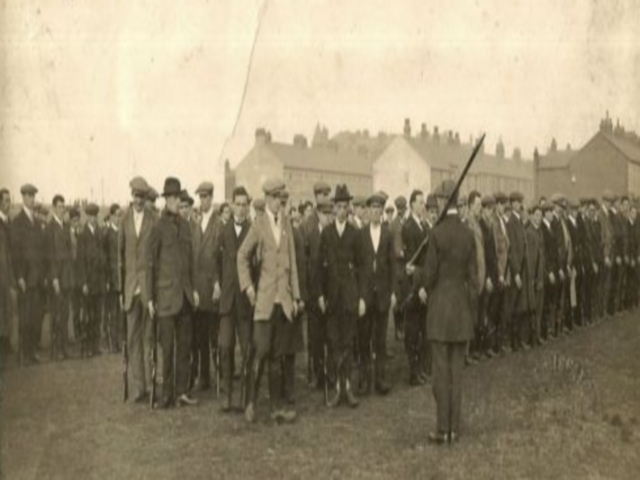 When WW1 broke out the British army was so small that the Kaiser dismissed it as
incompatible. Despite the initial surge to enlist Britain needed to expand its army quickly
and so came up with the promise that those who joined up together (as pals) would stay together
and fight together (and of course they died together).
When WW1 broke out the British army was so small that the Kaiser dismissed it as
incompatible. Despite the initial surge to enlist Britain needed to expand its army quickly
and so came up with the promise that those who joined up together (as pals) would stay together
and fight together (and of course they died together). -
The Menai Straits
The Menai Straits is a narrow stretch of fast flowing tidal water, which separates the island of Anglesey from mainland Wales. Prior to the building of the Bridge, ferries across the Menai Straits often capsized. One year a ferry carrying 55 people was stranded on a sandbar in high winds, all but one had perished by the following day when rescuers from Caernarfon reached the spot.
-
Penmaenmawr crash
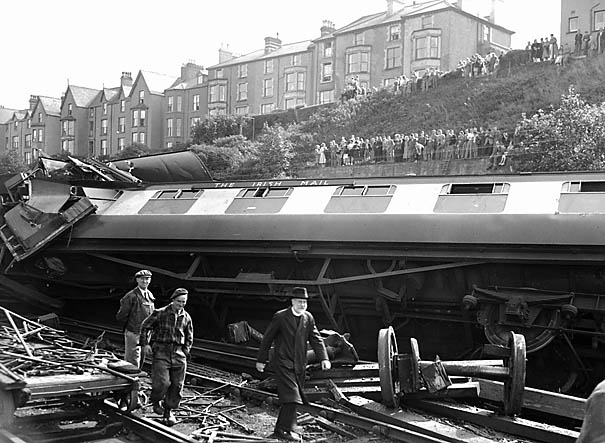 On August 27th 1950, a train full of passengers returning from Ireland collided with another train at
Penmaenmawr, as a result of a mix up in the signal box. A small engine was making its way towards
Llandudno when the Irish Mail fast train was travelling in the same direction on the same line. The
force of the collision shattered Irish Mail's dormer carriage and five people inside were killed, most
of the carriages were thrown off the rails.
On August 27th 1950, a train full of passengers returning from Ireland collided with another train at
Penmaenmawr, as a result of a mix up in the signal box. A small engine was making its way towards
Llandudno when the Irish Mail fast train was travelling in the same direction on the same line. The
force of the collision shattered Irish Mail's dormer carriage and five people inside were killed, most
of the carriages were thrown off the rails. -
The Great Orme
The Great Orme is a headland off Llandudno, famous as a Victorian tourist attraction it had a tramway built up the main road in the 1900’s. Large-scale human activity on the Great Orme began in the Bronze Age with the opening of several copper mines. These were abandoned around 600 BC. There is a visitor centre with a model of a bronze age village depicting life in bronze age times. You can walk through tunnels mined nearly 4,000 years ago and get a feel for the conditions our prehistoric ancestors faced in their search for valuable copper ores.


















 Presumably wanted for the top-secret information he knows, Number Six is hunted, yet thwarts his
captors at every turn. Even the ‘Simpsons’ made an episode featuring the Prisoner.
Presumably wanted for the top-secret information he knows, Number Six is hunted, yet thwarts his
captors at every turn. Even the ‘Simpsons’ made an episode featuring the Prisoner. 



